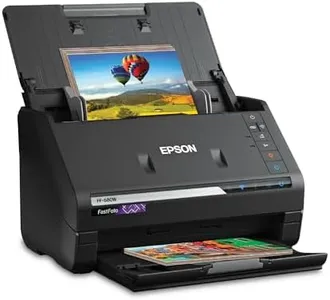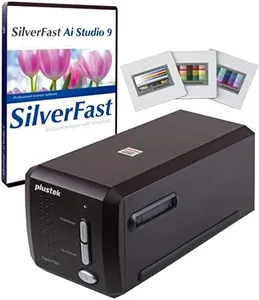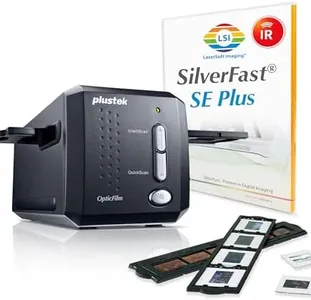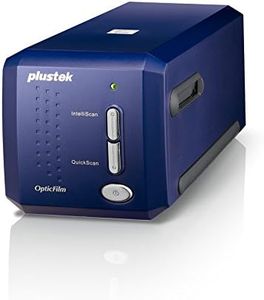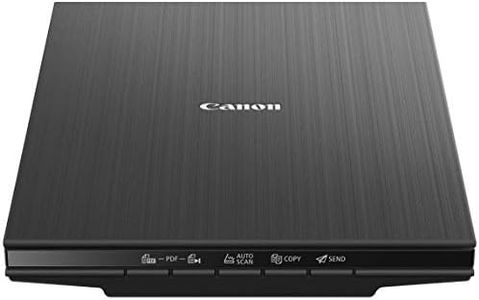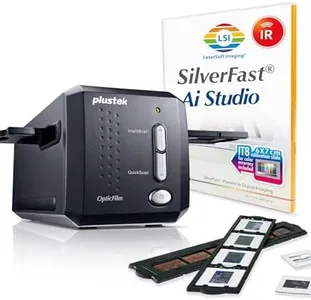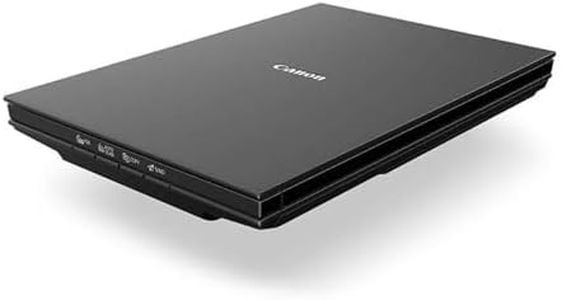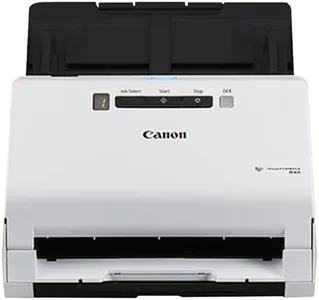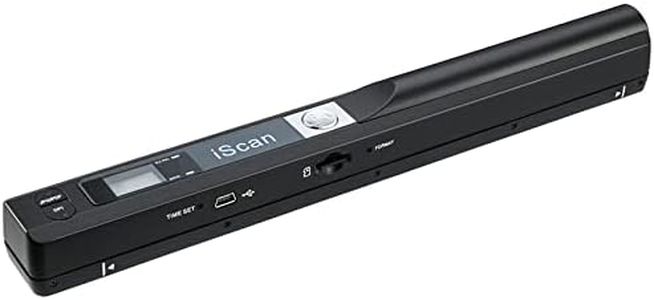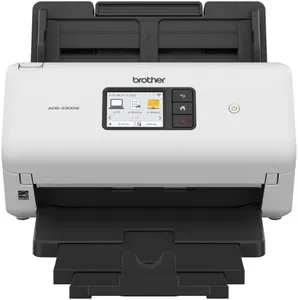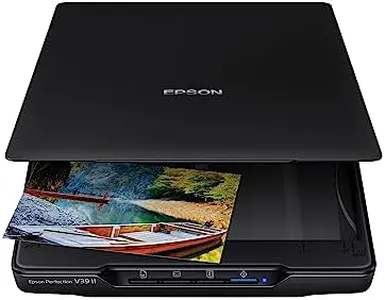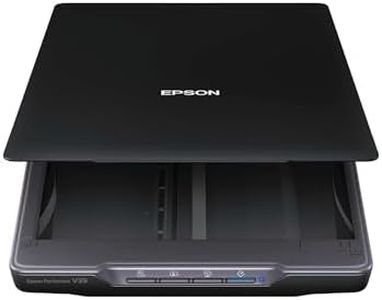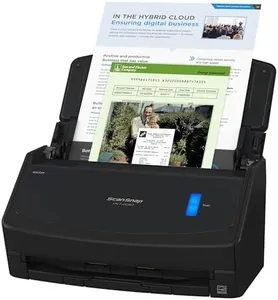We Use CookiesWe use cookies to enhance the security, performance,
functionality and for analytical and promotional activities. By continuing to browse this site you
are agreeing to our privacy policy
10 Best Photo Scanner For Macs
From leading brands and best sellers available on the web.Buying Guide for the Best Photo Scanner For Macs
Choosing the right photo scanner for your Mac is about matching your needs for image quality, speed, size, and ease of use. Think about what types of materials you'll scan (photos, film, documents), how important perfect color accuracy is, and what you'll do with your digital images after scanning (archiving, sharing online, printing). Consider whether you'll need to scan in bulk or just occasionally, and how much desk space the scanner can occupy. Always confirm compatibility with your Mac's operating system and available connection ports.Resolution (DPI)Resolution, measured in DPI (dots per inch), tells you how detailed a scanned image will be. Higher DPI captures more details, which is important for enlarging photos or preserving fine details. For basic photo archiving or sharing online, 300-600 DPI is usually enough. If you need to restore, print, or heavily crop images, look for at least 1200 DPI or more. Choose lower DPI for faster scans and smaller files if you don’t need lots of detail.
Color DepthColor depth refers to how many colors a scanner can capture, typically measured in bits. More bits mean richer, more accurate color and smoother gradients, important for high-quality photo scans. Most scanners offer 24-bit color, which is good for casual use. For best preservation of photos, especially if you plan to edit images, 48-bit offers more flexibility. If you just want to digitize and share family snapshots, standard color depth is ample.
Scan SpeedScan speed tells you how quickly each photo can be digitized. If you plan to scan just an occasional photo, speed isn’t critical. But for large projects, a scanner rated at a faster pages- or photos-per-minute can save lots of time. Very high-speed scanners tend to trade off a bit of image quality, so balance your need for speed with your image quality expectations.
Scan Size/FormatScan size tells you what physical dimensions the scanner can handle. Some scanners are best for standard 4x6 or 8x10 photos, while others can handle larger items or even film negatives. Think about what items you want to scan now and in the future. If you have both prints and old slides or negatives, look for a scanner with film support.
ConnectivityConnectivity refers to how you connect the scanner to your Mac. Most scanners use USB, but make sure the type (USB-A vs. USB-C) matches your Mac’s ports. Some models offer wireless connection (Wi-Fi or Bluetooth), which can be convenient if you want less cable clutter or to use the scanner in different spots. Always check that the scanner's software is compatible with your version of macOS.
Bundled Software & CompatibilityBundled software can make scanning and organizing photos easier, providing tools for editing, enhancing, or organizing images. For Mac users, it’s essential that the scanner’s drivers and software are supported by macOS, especially the version you're using. Good native or included software helps streamline the process, especially if you want tools for restoring colors or removing dust and scratches from old photos.
Physical Size & PortabilityPhysical size matters if desk space is tight or you need to move the scanner often. Flatbed scanners are usually larger but versatile, while portable sheet-fed models are compact and easy to store. Think about where you’ll keep the scanner and whether it needs to travel with you, then pick a size that fits your space and lifestyle.
